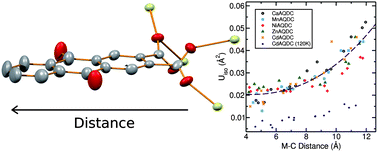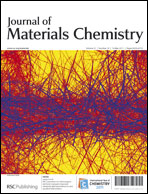Five novel inorganic–organic framework compounds containing the organic chromophore ligand anthraquinone-2,3-dicarboxylic acid (abbreviated H2AQDC) and calcium (CaAQDC), zinc (ZnAQDC), cadmium (CdAQDC), manganese (MnAQDC), and nickel (NiAQDC), respectively, have been synthesized. The photoluminescence of these materials is only visible at low temperatures and this behaviour has been evaluated in terms of ligand rigidity. It is proposed that the 2,3 position bonding sites result in luminescence-quenching ligand motion, as supported by X-ray diffraction and temperature-dependent luminescence studies.
You have access to this article
 Please wait while we load your content...
Something went wrong. Try again?
Please wait while we load your content...
Something went wrong. Try again?


 Please wait while we load your content...
Please wait while we load your content...